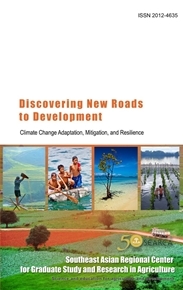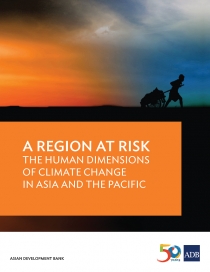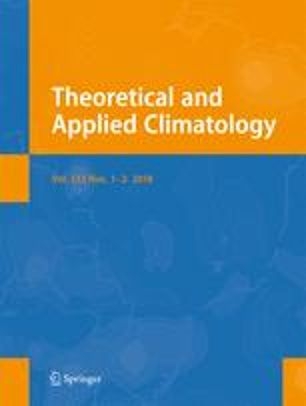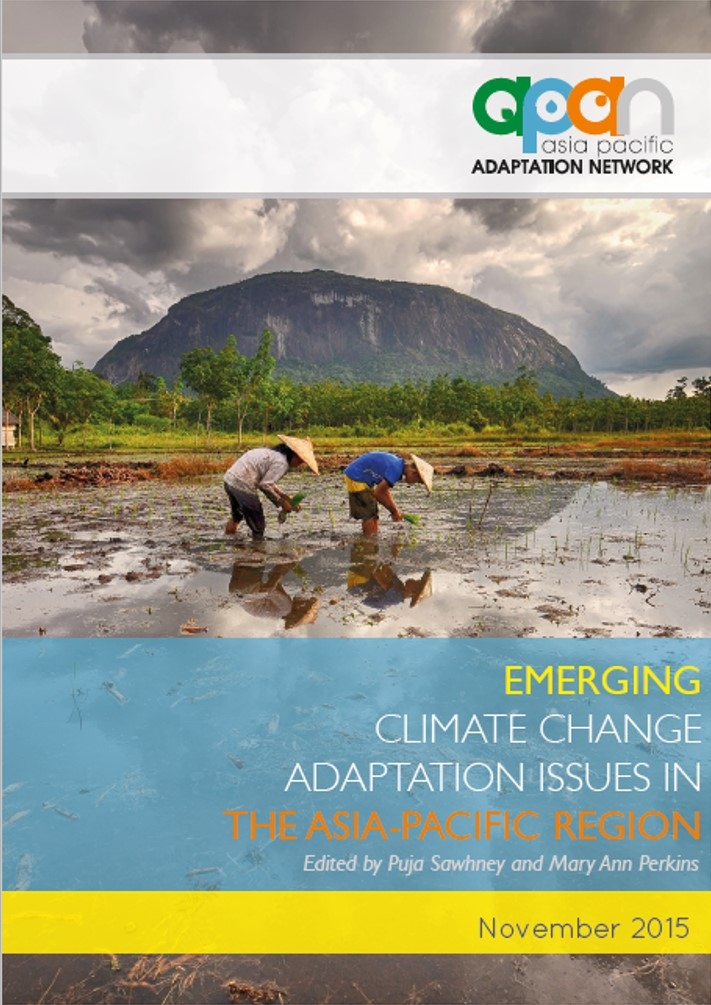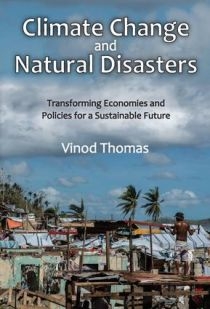Publications
This contains experience notes, adaptation notes, policy briefs, policy papers, technical reports, stories on good practices, and other publications related to climate change adaptation and mitigation in Southeast Asia not just from SEARCA, but also from KC3's partners and other agencies/institutions.
Discovering New Roads to Development Volume 4: Climate Change Adaptation, Mitigation, and Resilience
For this particular volume, due attention is given to climate change adaptation, mitigation, and resiliency because of its negative effects on the agricultural sector. Under SEARCA’s Tenth Five-Year Plan focused on Inclusive and Sustainable Agricultural and Rural Development (ISARD), climate change is flagged as a priority concern as it hinders the sector’s ability to provide food for a growing population that continues to struggle with poverty and hunger. Contents: Vulnerability Assessment of Rice Farming Provinces to Climate Change in the…
Recent regional climate change projections have consequences for human systems, particularly for developing countries in Asia and the Pacific. Asia and the Pacific continues to be exposed to climate change impacts. Home to the majority of the world’s poor, the population of the region is particularly vulnerable to those impacts. Unabated warming could largely diminish previous achievements of economic development and improvements, putting the future of the region at risk. The report discusses the most recent projections pertaining to climate change and climate change…
Abstract Here, we review the impacts of recent natural disasters in developing countries on rural agriculture and livelihoods with the objective of understanding gaps and providing recommendations. Lessons from these disasters demonstrate that national governments, aid agencies, and international/non-governmental organizations (I/NGOs) are effective primarily at distributing short-term products (e.g. food packages and tarpaulin) to cities. Such products are inexpensive, simple to procure, and easily quantifiable for donors. Unfortunately, the literature suggests that many national governments and foreign NGOs are ineffective…
Climate is changing and evidence suggests that the impact of climate change would influence our everyday lives, including agriculture, built environment, energy management, food security, and water resources. Brunei Darussalam located within the heart of Borneo will be affected both in terms of precipitation and temperature. Therefore, it is crucial to comprehend and assess how important climate indicators like temperature and precipitation are expected to vary in the future in order to minimize its impact. This study assesses the application…
Climate change is a major global concern that greatly affects people, including their source of living. In 2010, the Asian Development Bank reported that Vietnam is one of the five countries most severely affected by climate change. About 70 percent of the country's total population lives along coastal areas and in islands. This study aimed to (1) evaluate the impacts of climate change on aquaculture in Phu Vang district (Thua Thien Hue province, Vietnam), and (2) develop a climate change adaptation model for aquaculture. Data on impact…
This report aims to fill a need for the latest thinking on climate change adaptation (CCA) in the Asia-Pacific region, thus the members of the Asia Pacific Adaptation Network (APAN)* produced this report titled Emerging Climate Change Adaptation Issues in the Asia-Pacific Region to address pertinent and relevant issues in the region and sub-regions. This report aims to raising awareness and building the capacity of policymakers to deal with CCA.
Providing street and public lighting is one of the most expensive responsibilities of a municipality. This report presents lessons from a pilot LED project in Indonesia. Providing street and public lighting can account for up to 38% of energy consumption and greenhouse gas emissions in some cities. New energy-efficient technologies and design can cut street lighting costs dramatically (up to 60%) and reduce greenhouse gas emissions by the same amount. These savings can reduce the need for new generating plants…
This brief discusses remote sensing technology as a powerful tool in understanding basin water resources. In a pioneering collaborative study, a research team from IHE Delft Institute for Water Education is working closely with ADB operations departments using remote sensing to understand how water resources are used in project sites in six countries: Cambodia, India, Indonesia, Pakistan, Sri Lanka, and Viet Nam. Using remote sensing technology, for the first time, water productivity can be measured right down to the farm level. For years, the limitation has always been the lack…
By 2050, agriculture will need to produce 100% more food in developing countries. Improved irrigation productivity and greater financial sustainability are critical. Water resources are becoming increasingly scarce in the Asia Pacific region. By 2050, agriculture will need to produce 100% more food in developing countries. Climate change and rapid population growth will place new pressures on already scarce water resources. Improved irrigation productivity—more crop per drop—and greater financial sustainability are critical. Estimates for the Asian region place a $12.31…
In 2014, 17.5 million people were displaced by climate-related disasters, ten times more than the 1.7 million displaced by geophysical hazards. What is causing the increase in natural disasters and what effect does it have on the economy? Climate Change and Natural Disasters sends three messages: human-made factors exert a growing influence on climate-related disasters; because of the link to anthropogenic factors, there is a pressing need for climate mitigation; and prevention, including climate adaptation, ought not to be viewed…

